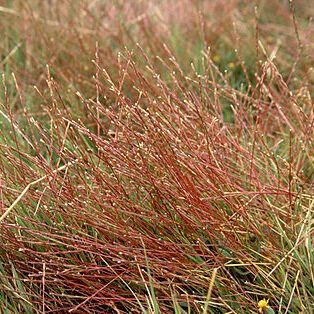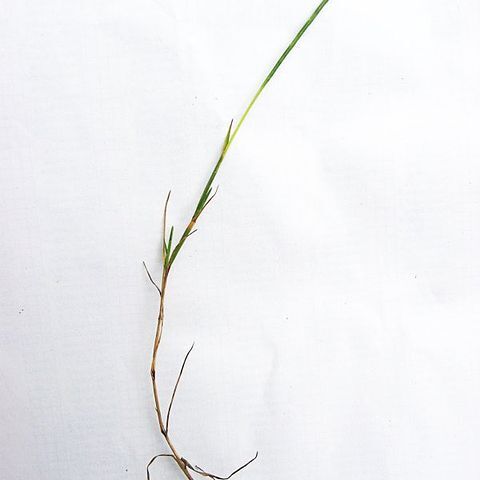Annuals. Leaf blades narrowly linear to linear-lanceolate. Inflorescence a slender cylindrical raceme, spikelets sessile in 2 alternating rows sunk in hollows of the rachis; rachis fragile, fracturing horizontally beneath each spikelet at maturity. Spikelets with 1 floret; glumes leathery, placed side by side in front of spikelet and appressed to rachis, closing rachis cavity and covering floret, asymmetrical, appearing like halves of a single split glume, strongly 3–7-veined, outer margin inflexed, apex acute; lemma hyaline, 3-veined, its side toward the rachis, awnless; palea slightly shorter than lemma. Ovary with lobed apical appendage; styles nearly absent. Caryopsis narrowly oblong; hilum round to narrowly oblong. Endosperm liquid.
Spikelets 1-fld, solitary, alternate, sessile and sunken in concavities of the rachis, forming a terete slender spike; glumes 2, borne side by side and covering the cavity except at anthesis, strongly 5-veined, coriaceous, the outer margins indurate, the overlapping inner margins scarious; lemma lanceolate, scarious, concealed by and much shorter than the glumes, with its back to the rachis, 3-veined, the lateral veins very short; palea scarious, barely shorter than the lemma; rachis disarticulating at maturity below each spikelet; annuals with overlapping sheaths and elongate spikes. 5, Eurasia.


